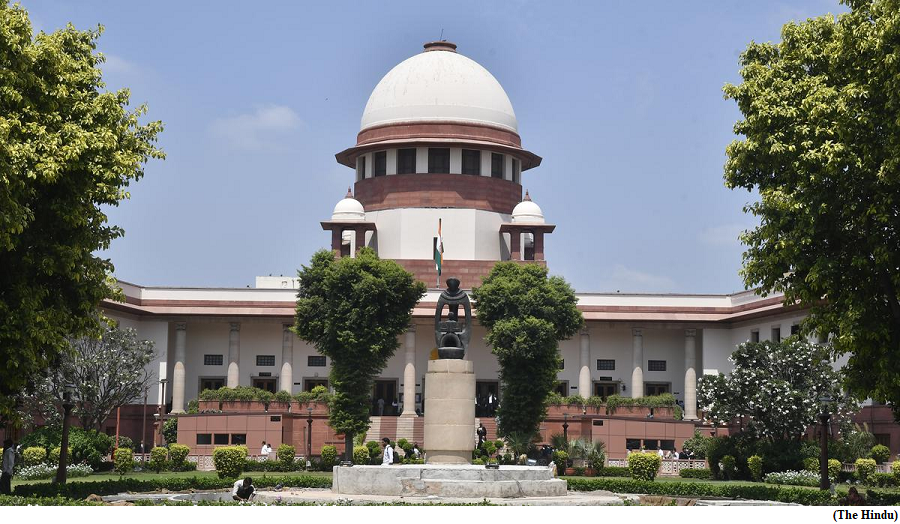Article 370 judgment is a case of constitutional monism (GS Paper 2, Polity and Constitution)

Context:
- More than four years after the abrogation of Article 370, the Supreme Court of India, recently unanimously upheld the actions of the Indian government.
- While much of the discourse around the judgment has focused on the question of statehood, it is important to remember that the special status of Jammu and Kashmir (J&K) was really at the heart of the matter.
- To arrive at its conclusions, the Court employs a historical, textual, and structural interpretation of the Constitution of India, and all three approaches are deeply informed by constitutional monism.
What is monism?
- In a parliamentary federal democracy, constitutional monism is a concept that pertains to the relationship between law at the centre and law enacted by states within a particular legal system.
- It is a perspective that emphasises the unity of the legal order, asserting that both law at the centre and states’ law form a single, integrated legal system.
- In constitutional monism, there is a hierarchy of norms, with the constitution (or a constitutional document) at the apex.
Federalism and constitutional sovereignty
Union-Centric approach:
- The monism that is reflected in the judgment imagines the Union Constitution as the sole bearer of internal and external sovereignty. Article 370 laid down an elaborate framework for the distribution of powers and authority between the Union and the State governments.
- This was affirmed by the J&K Constituent Assembly and not just as an interim measure pending total integration.
- Its Basic Principles committee’s report, based on which the State Constitution was drafted, stated: ‘The sovereignty of the State resides in the people thereof and shall except in regard to matters specifically entrusted to the Union be exercised on their behalf by the various organs of the State...the State’s legislature will have powers to make laws for the State in respect of all matters falling within the sphere of its residuary sovereignty’.
- By focusing more on the particular concept of sovereignty ‘which requires no subordination to another body’, the Court ends up refusing to recognise the shared sovereignty model of Article 370.
The contingency of the presidential power:
- The Court rejects the argument that Article 370 had gained permanence after the dissolution of the Constituent Assembly as this ‘is premised on the understanding that the constitutional body had unbridled power to alter the constitutional integration of the State with the Union’.
- The Court also relies on Clause 3 to hold that Clause 1 could be operated without the concurrence of the State government since ‘the effect of applying all the provisions of the Constitution to Jammu and Kashmir through the exercise of power under Article 370(1)(d) is the same as issuing a notification under Article 370(3)’.
- In a constitutional democracy, no body or institution has unbridled powers. Further, Clause 3 of Article 370 is primarily concerned with the relationship of two powers and not just the status or the relationship of the power-bearing entities.
- The proviso to Clause 3 makes it clear that the presidential power to abrogate Article 370 was contingent on the recommendation of the Constituent Assembly.
Defies the logic of federalism:
- As it is in the nature of the presidential powers under Clause 3 to be contingent on the Constituent Assembly, this limitation does not die with the dissolution of the Assembly.
- The relation of powers here does not mean that the President becomes ‘subordinate’ to the Constituent Assembly but that power as a federal arrangement has been distributed across multiple axes under Article 370.
- Holding that the President has the untrammelled power to abrogate Article 370 and order a total application of the Indian Constitution to the State to the effect that the State’s Constitution becomes inoperative is an ‘unbridled power’ that defies the logic of federalism and constitutional democracy.
State’s views on its future:
- Justice Sanjay Kaul holds that ‘views are to be taken from the entire nation via the Parliament, as the issue leading to the reorganisation affects the nation as a whole’.
- There are many sites within the Constitution where a recommendatory power is vested in a body. Merely because that power may not be binding does not mean that the power can be taken over by another body or that power need not be exercised because at its heart lies the question of agency.
- The inevitable conclusion that one arrives at is that the popular sovereignty of a State’s people vis-à-vis the State becomes subordinate to the popular sovereignty of the entire nation vis-à-vis the Union as well as the States.
- This is particularly worrying in the context of J&K where the threshold for reorganising the State was historically much higher compared to the other States.
Conclusion:
- By relying on a monist reading of the Constitution, in a context that defies monism, the Court has not only upheld the abrogation of Article 370 but has also put its stamp of approval on the silencing, and rendering inconsequential, of the voice of the people of the former State of J&K.


